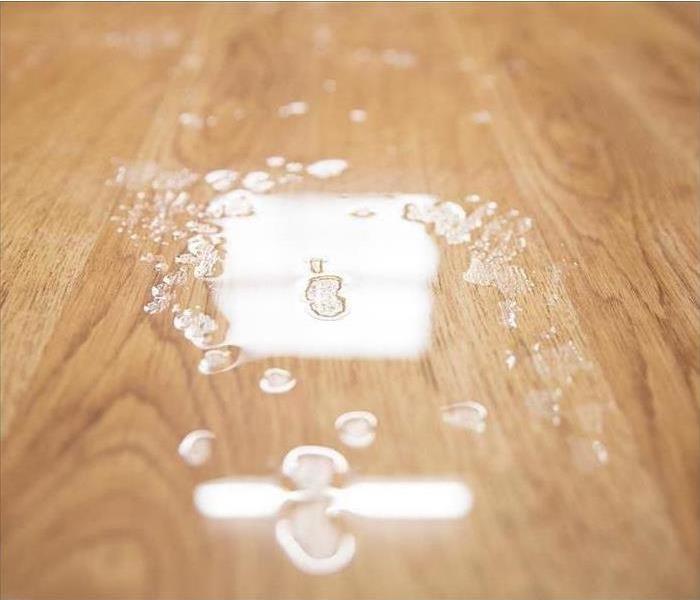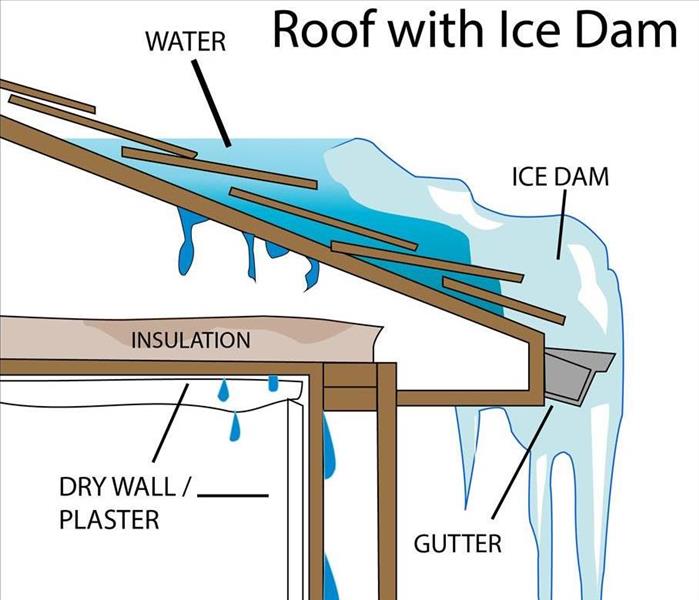Recent Water Damage Posts
Gutters Matter!
8/25/2022 (Permalink)
In June 2020, our experienced a significant amount of rainfall which brought the wettest on record according to the National Weather Service. In receiving this significant amount of rainfall, aside from the flooding (water damage) that comes as a result of rising rivers or other bodies of water, we began also receiving calls from customers that had unexplained mold growing on their ceilings as well as outside walls on their homes or businesses. Since one of the key factors in properly mitigating a water damage is identifying the source, naturally we began with a roof inspection, which in every case to the date of this blog posting, has produced no findings which would indicate a raised nail, missing screw, or shingle tab is the culprit. Following a flood of questions to the homeowner, which generally reveal no prior history of brown stains or leaks from the ceiling or walls, some may not know to look at or inspect the gutter system.
Gutters play a significant role in a number of things which protect the home. They keep water from running directly off of a roof and onto a deck, into your flower bed, and through the proper design/installation/operation of the gutter system, also diverts water away from the foundation of the home. According to our friends over at Erie Insurance, failing to annually inspect your gutter system can result in foundation issues, broken gutters, wall and ceiling Damage, a wet basement, and insect infestations.
Our customers were all found to have the same issue, easily avoidable clogged gutters which permitted the gutter system to become backfilled with water, further permitting that water to intrude into the home. Following a brief inspection of the gutters, debris was found in the downspouts, in some cases with plants growing out of them, which prevented the water from properly draining.
As their article properly suggests, gutter damage is expensive to mitigate, but inexpensive and easy to prevent. Take the proper precaution to inspect your gutters, ensuring you have the proper tools, ladder, and equipment to mitigate any issues you find. Taking the time to do this will allow you to also better inspect your homes roof for any damage from the previous season, as well as other areas you may need to focus on moving forward.
If your home has suffered water damage, call SERVPRO of LBL South to assist you in mitigating this damage! We are always happy to help!
JN
References:
Metz, J. (2018, October 17). 5 Common problems caused by clogged gutters. Retrieved from Erie Insurance: https://www.erieinsurance.com/blog/clean-gutters
NOAA National Centers for Environmental Information. (2020, August 5th). National Climate Report - June 2020. Retrieved from National Oceanic and Atmospheric Administration: https://www.ncdc.noaa.gov/sotc/national/202006
Faster to any Northwest TN Water Damage
8/2/2022 (Permalink)
Flooding and water emergencies don’t wait for regular business hours and neither do we. SERVPRO of LBL South provides emergency cleaning and restoration services 24 hours a day, 7 days a week—including all holidays.
Faster To Any Size Disaster
Flooding and water damage is very invasive. Water quickly spreads throughout your home and gets absorbed into floors, walls, furniture, and more. SERVPRO of LBL South arrives quickly and starts the water extraction process almost immediately. This immediate response helps to minimize the damage and the cleaning and restoration costs.
Need Emergency Service? Call Us 24/7 – (731) 642-1284
Water Damage Timeline
Within Minutes
- Water quickly spreads throughout your property, saturating everything in its path.
- Water is absorbed into walls, floors, upholstery, and belongings.
- Furniture finishes may bleed, causing permanent staining on carpets.
- Photographs, books, and other paper goods start to swell and warp.
Hours 1 - 24:
- Drywall begins to swell and break down.
- Metal surfaces begin to tarnish.
- Furniture begins to swell and crack.
- Dyes and inks from cloth and paper goods spread and stain.
- A musty odor appears.
48 Hours to 1 Week:
- Mold and mildew may grow and spread.
- Doors, windows, and studs swell and warp.
- Metal begins to rust and corrode.
- Furniture warps and shows signs of mold.
- Paint begins to blister.
- Wood flooring swells and warps.
- Serious biohazard contamination is possible.
More Than 1 Week:
- Restoration time and cost increase dramatically; replacing contaminated materials and structural rebuilding may be extensive.
- Structural safety, mold growth, and biohazard contaminants pose serious risks to occupants.
About SERVPRO of LBL South
SERVPRO of LBL South specializes in the cleanup and restoration of residential and commercial property after a fire, smoke or water damage event. Our staff is highly trained in property damage restoration. From initial and ongoing training at SERVPRO’s corporate training facility to regular IICRC-industry certification, rest assured our staff is equipped with the knowledge to restore your property.
Having Mold Issues In Your Home?
8/2/2022 (Permalink)
Microscopic mold spores naturally occur almost everywhere, both outdoors and indoors. This makes it impossible to remove all mold from a home or business. Therefore, mold remediation reduces the mold spore count back to its natural or baseline level. Some restoration businesses advertise “mold removal” and even guarantee to remove all mold, which is a fallacy. Consider the following mold facts:
- Mold is present almost everywhere, indoors and outdoors.
- Mold spores are microscopic and float along in the air and may enter your home through windows, doors, or AC/heating systems or even hitch a ride indoors on your clothing or a pet.
- Mold spores thrive on moisture. Mold spores can quickly grow into colonies when exposed to water. These colonies may produce allergens and irritants.
- Before mold remediation can begin, any sources of water or moisture must be addressed. Otherwise, the mold may return.
- Mold often produces a strong, musty odor and can lead you to possible mold problem areas.
- Even higher-than-normal indoor humidity can support mold growth. Keep indoor humidity below 45 percent.
If your home or business has a mold problem give us a call today and we can inspect your home or business and assess your property and we can use our specialized training, equipment, and expertise to re-mediate your mold infestation. Our experienced and professional staff will be glad to come out and give and estimate today.
If You See Signs of Mold, Call Us Today – 731-642-1284
SERVPRO of LBL South
Restoration When Flood Strikes
6/6/2022 (Permalink)
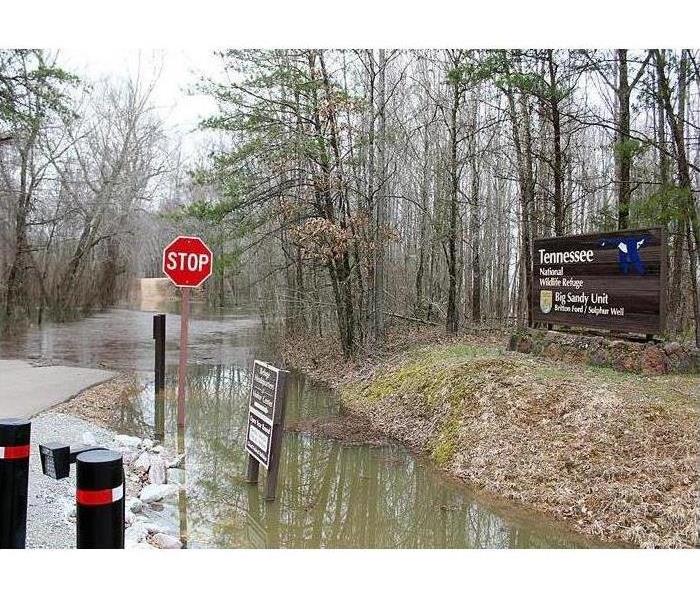 When disaster strikes, such as flooding, SERVPRO of LBL South is here to help.
When disaster strikes, such as flooding, SERVPRO of LBL South is here to help.
When flooding occurs, SERVPRO of LBL South is here to help with 24/7 Emergency Support because we know that immediate action is crucial to protect your home, as well as your possessions. A delay of even a few minutes or hours could result in much worse damage.
We answer the phone ready to help.
Call Today- (731)642-1284
We understand that when calling us, you may be feeling panicked, confused, or vulnerable. You need a professional to help you through the crisis. SERVPRO of LBL South has the expertise, experience, and training to help you through this tough time. We specialize in water damage restoration- in fact, it’s cornerstone of our business.
What to expect:
When you call, we will ask just a few questions about the damage and your information in order to get the information we need to assist you, as well as knowing what kind of equipment and personnel to bring. Questions asked may include, but are not limited to:
- Your name and contact information
- Your insurance information (if applicable)
- The street address of the water-damaged home or business
- When did the flooding or water damage occur?
- What is the cause of the damage? (If known)
- Is there electricity available on-site?
Black Water: What is it? And How Do I Avoid it?
6/6/2022 (Permalink)
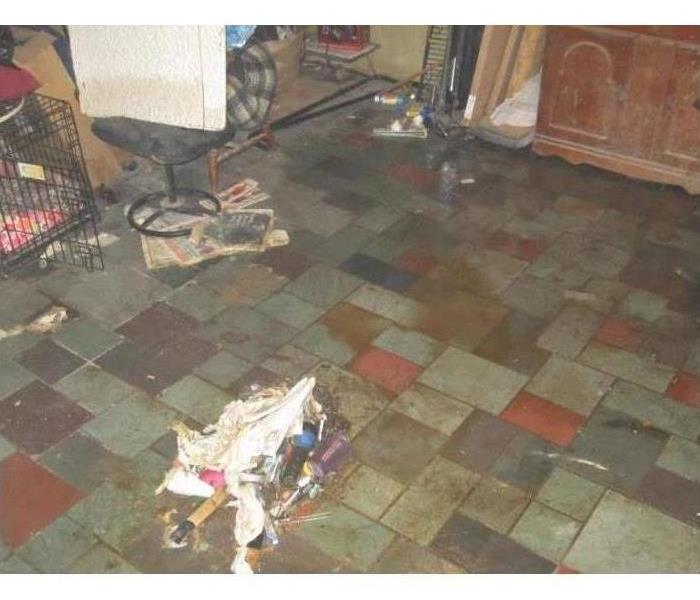 In the photo, we see black water seeping into the floor in someone's home. Thankfully, SERVPRO can help. Learn how below.
In the photo, we see black water seeping into the floor in someone's home. Thankfully, SERVPRO can help. Learn how below.
What is Black Water?
Black water, also known as category 3 water damage, is water which is highly contaminated and can lead to issues such as illness, disease, and infection. Black water is typically caused by groundwater flooding or a backup in the sewage system. As a result, this water is loaded with contamination, microbes, and biohazards. Any object touched by black water will need to be cleaned and sanitized. The most common occurrence of black water is when a recently used toilet overflows onto the bathroom floor. Human waste, especially fecal matter, is a biohazardous material. Additionally, kitchen sinks can lead to black water damage. A kitchen sink is a useful tool for cooking and cleaning, but it typically contains grease, oils, and food chunks that decay and carry all manner of germs. If your kitchen sink overflows, the results are nearly the same as a toilet overflow in terms of germs and bacteria.
How to Avoid Black Water
- If using a water tank for your toilet, ensure that you put water in it before using, this way the materials inside can break down, avoiding backup.
- Refrain from using bleach-based products in your toilets. Bleach kills the good bacteria as well as the bad, leaving you with no good bacteria to breakdown waste.
Who Can I Call?
If you find yourself in a situation where you need cleanup for a black water crisis, SERVPRO of LBL South is here to help. We have professionals trained with all the expertise needed for any situation at hand. If the situation is an emergency, we are available 24/7 to help. Give us a call: (731)642-1284.
Sources: TheDyrt.com.
Diverting Water Away From the Home
9/9/2021 (Permalink)
Rain, Rain, Go Away!
“Home is where love resides, memories are created, friends and family belong, and laughter never ends.” We all want to ensure that our houses will be home to ourselves and our family for many years. The thought of water flooding the home, foundation erosion, soil and grass deterioration are all nightmares that we hear of all too often. Although we hope these things never happen, there are ways to help avoid these nightmares, and avoid costly foundation repairs in the long run. The ability to draw water away from your home could save you time, money, and heartache for many years ahead. If water builds up around the foundation of the house, it can allow for the water to seep into walls, which can cause moisture as well as mold to begin intruding into your home.
Below we have provided four ways to draw water away from your home…
- Install a Rain Gutter System: North Dakota State University Extension Service has conducted research on this topic, and they found “that 1 inch of water on 1,000 square feet of roof translates to 620 gallons of water”. Slanted roofs cause the water to run off, but without a gutter system the water will begin to pool around the base of the house. “Environmental Protection Agency (EPA) recommends using an extended rain spout of at least 5 feet at the end of the downspout” this allows for enough distance for the water to be discarded away from the house.
- Create A Barrier: Over time your soil is altered by the runoff of water from the roof of your house. This leads to the soil moving and creating those unwanted pools of water that build up around your house. It is suggested to “rebuild” the soil around your house to redirect the runoff water. In an article in the "Chicago Tribune" they suggest “building a slope of topsoil or crushed stone that extends from the home 2 to 3 feet. As well as the NDSU Extension Service suggests that the slopes be 1 inch higher per every foot in length.
- Dig A Trench: Once the water is carried away from the house, then it is important to get rid of the water before it ventures back towards your house. One of the ways to do this is to build a trench. The trench is suggested to be 3 to 4 ft deep, and 2 to 3 ft across by an article in “Chicago Tribune”. The trench should be in the lowest part of the property and in a U-shape. Place filter fabric on the high end to filter out the dirt and silt, as well as fill the trench with gravel or crushed rock.
- Build A Dry Well: If yards are small and easily hold water, the gutters and barriers may not be enough to get rid of water. A dry wall may need to be installed to get rid of standing water that threatens your home. Dry Wells are holes in the ground that are filled with gravel or crushed rock that are 3 to 4 ft wide and 5 to 6 ft deep. These allow for a slow transfer of water to the ground.
Although these seem like time consuming ideas, they can ultimately save you from the nightmares of water damage. If you have questions about the preventative actions check out the link below. Also, if you have any further questions or damage has already begun, please contact SERVPRO of LBL South at (731) 642-1284.
Resources:
Drawing Water Away From The House
Are You Sure the Toilet Isn't Leaking?
9/8/2021 (Permalink)
Are You Sure the Toilet Isn’t Leaking?
Do you see stains around the base of your toilet? Notice standing water or damaged tile? How about stains on the ceiling below where your toilet is located (multi-level home)? These can all be indications of a leaking toilet seal. A toilet seal is what connects the toilet to the main drain waste pipe flange in the floor. Typically, you find that if your toilet is rocking, that means that the seal is faulty and needs replaced. However, even if it is not rocking you still may find the toilet seal to have been installed incorrectly, possibly not aligned correctly, or not installed at all.
How to Replace Leaking Toilet Seal?
- TURN off the water at the shutoff valve. (typically located behind the toilet or possibly in the basement or crawlspace)
- REMOVE the toilet lid, hold the handle down, and drain all the water out of the toilet. You will also need to remove the water from the supply tank as well (using a sponge or cup may be helpful to get all the water out).
- DISCONNECT the water-supply tube. This is done by removing the compression nuts off the shutoff value.
- REMOVE the toilet by gently rocking back and forth to break off the pre-existing seal. (Use a putty knife to remove the old seal)
- CHECK the condition of the flange that holds the seal to ensure there are no cracks or broken pieces. (If so, this part will also need replaced)
- CENTER the new seal within the closest flange
- CONNECT the water-supply tube to the fill-valve shank that is located on the bottom of the toilet tank
- PRESS down on the toilet to compress the seal and tighten the bolts (do not over tighten)
- TRIM the tops of bolts, tighten bolts, and replace caps
- CONNECT the supply tube to the shutoff valve, open the valve, flush the toilet
- INSPECT for any leaks
A leaking toilet can seem like a minor issue, but if left unrepaired can turn into a large, costly issue. If the leak is caught in a timely manner, and repaired the homeowner is looking at low costs, and about an hours’ worth of work. However, if left alone to continue to leak, it can cause major damage to the subfloor of the house or even the walls. Once the floor begins to rot, it continues to spread and before anyone is aware of it, it can destroy an entire bathroom floor, causing showers, cabinets, sinks, and such to have to be removed in order to fix the damaged floor. This then turns into hours of restoration work, and costly materials.
For more information relating to the inspection of, removal or installation of a toilet gasket, please click on the link provided below. If you find that you do in fact have water damage as a result of a leaky/faulty gasket, please contact SERVPRO of LBL South at (731) 642-1284.
Resources:
Easy Fix for a Leaky Toilet
Dehu 101
9/10/2020 (Permalink)
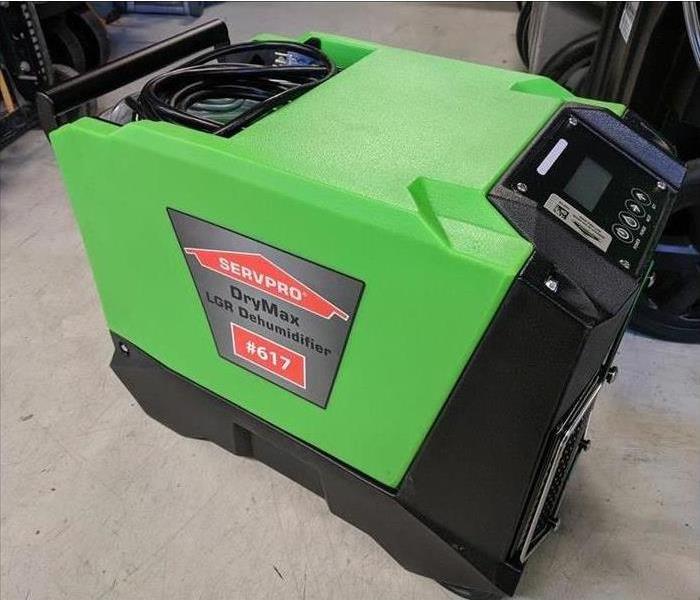 DryMax Dehu
DryMax Dehu
As a water damage restoration professional, we need professional-grade equipment that helps us tackle the toughest of jobs and deliver outstanding results for our clients. A powerful dehumidifier is a key component in our suite of tools. But what does a dehumidifier do?
Conventional dehumidifiers are designed for most water-damage remediation projects, and they can easily be transported from job to job and loaded and unloaded from a vehicle. They condense water vapor by passing air over refrigerated coils, and a heat pipe prevents frost from forming. This type of dehu can also be used in your home for moisture management. It helps to keep moisture levels more comfortable in humid environments, and helps ward off musty odors.
We use machines called LGR Dehumidifiers. LGR stands for low-grain refrigerant, which is a fancy way of saying these dehumidifiers provide maximum power in removing moisture from the air. How do they work? LGR dehumidifiers feature a double cooling system that lowers the temperature of moisture-filled air once inside the machine. This leads to more condensation that forms on the coils inside the machine, which in turn leads to more moisture pumped out and less moisture in the air that is returned to the room.
Now for my favorite dehu! *Drumroll*
The Phoenix Dry Max! What is special about the Dry Max? It's tiny compared to its brothers and sisters, but it still packs the same punch! It has an integrated handle and wheels as well as onboard storage for the power cord and condensate hose!
24/7 - 365 Emergency Services
9/9/2020 (Permalink)
Flooding and water emergencies don’t wait for regular business hours and neither do we. SERVPRO of LBL South provides emergency cleaning and restoration services 24 hours a day, 7 days a week—including all holidays.
Faster To Any Size Disaster
Flooding and water damage is very invasive. Water quickly spreads throughout your home and gets absorbed into floors, walls, furniture, and more. SERVPRO of LBL South arrives quickly and starts the water extraction process almost immediately. This immediate response helps to minimize the damage and the cleaning and restoration costs.
Need Emergency Service? Call Us 24/7 – (731) 642-1284
Water Damage Timeline
Within Minutes
- Water quickly spreads throughout your property, saturating everything in its path.
- Water is absorbed into walls, floors, upholstery, and belongings.
- Furniture finishes may bleed, causing permanent staining on carpets.
- Photographs, books, and other paper goods start to swell and warp.
Hours 1 - 24:
- Drywall begins to swell and break down.
- Metal surfaces begin to tarnish.
- Furniture begins to swell and crack.
- Dyes and inks from cloth and paper goods spread and stain.
- A musty odor appears.
48 Hours to 1 Week:
- Mold and mildew may grow and spread.
- Doors, windows, and studs swell and warp.
- Metal begins to rust and corrode.
- Furniture warps and shows signs of mold.
- Paint begins to blister.
- Wood flooring swells and warps.
- Serious biohazard contamination is possible.
More Than 1 Week:
- Restoration time and cost increase dramatically; replacing contaminated materials and structural rebuilding may be extensive.
- Structural safety, mold growth, and biohazard contaminants pose serious risks to occupants.
About SERVPRO of LBL South
SERVPRO of LBL South specializes in the cleanup and restoration of residential and commercial property after a fire, smoke or water damage event. Our staff is highly trained in property damage restoration. From initial and ongoing training at SERVPRO’s corporate training facility to regular IICRC-industry certification, rest assured our staff is equipped with the knowledge to restore your property.
Ice Damming... What is it?
1/23/2018 (Permalink)
An ice dam is an ice build-up on the eaves of sloped roofs of heated buildings that results from melting snow under a snow pack reaching the eave and freezing there. Freezing at the eave impedes the drainage of meltwater, which adds to the ice dam and causes backup of the meltwater in a manner, which may cause water leakage into the roof and consequent damage to the building and its contents if the water leaks through the roof.
Ice dams are a common sight in Northern states... not so common here in Tennessee. We've handled several claims this past month stemming from ice damming. What we've found is the flatter the pitch of the roof, the easier it is for an ice dam to get a grip. Gutters at the eaves can also trap snow and ice. If snow and ice build up high enough in the gutter, it can provide a foundation for an ice dam.
PREVENTING ICE DAMS
You can scrape snow from the roof whenever it falls, using a snow rake from below or a broom or plastic shovel from above. BE CAREFUL: The first method can bury you in snow, while the second can send you slipping off the roof. Hire someone who knows how to use a safety line.
You can replace your shingle roof with standing seam or other metal roof. Or you can replace the bottom three feet or so of your shingle roof with a wide metal drip edge. Whatever you do, install a water-repellent membrane under any new roofing.
NOTE: If your roof is not very steep, an ice dam can still form on metal roofing and drip edges.
DEALING WITH EXISTING ICE DAMS
1. Remove the ice dam by breaking it free in small chucks. Do NOT use an ax or other sharp tool! You’ll cut through the shingles. Instead, tap lightly with a blunt mallet. This is slow, dangerous work, so hire someone experienced at roofing. Even if you do it safely, the chunks of ice can take pieces of shingle with them.
2. Clear out gutters and downspouts. Again, this is ladder work and an easy way to damage either plastic or metal gutters and spouts.
3. Melt troughs through the ice dam with calcium chloride ice melter. Do NOT use rock salt! It will damage paint, metals, and plants beneath the eave and wherever the salty water drains.
A good trough-maker is a tube of cloth (a leg from an old pair of panty hose works well). Fill it with calcium chloride, tie off the top, and lay it vertically across the ice dam. It will slowly melt its way down through the dam, clearing a path for the underlying water to flow free.
WHAT DAMAGE DO ICE DAMS CAUSE?
When an ice dam gets big enough, melted water backs up behind it and seeps underneath the shingles. Eventually, it will drip into the insulation and down into the ceilings and exterior walls beneath the eave, ruining sheetrock and paint. If the ice dam breaks free, it can pull shingles and gutters off with it, and it will damage anything it falls on: shrubs, windowsills, cars, pets, and people. If the roof sheathing stays wet, it can form mildew and start to rot.
That's where we come into play. We can't prevent the ice damming from happening, but we can help you take care of the damages that it can cause.






 24/7 Emergency Service
24/7 Emergency Service
